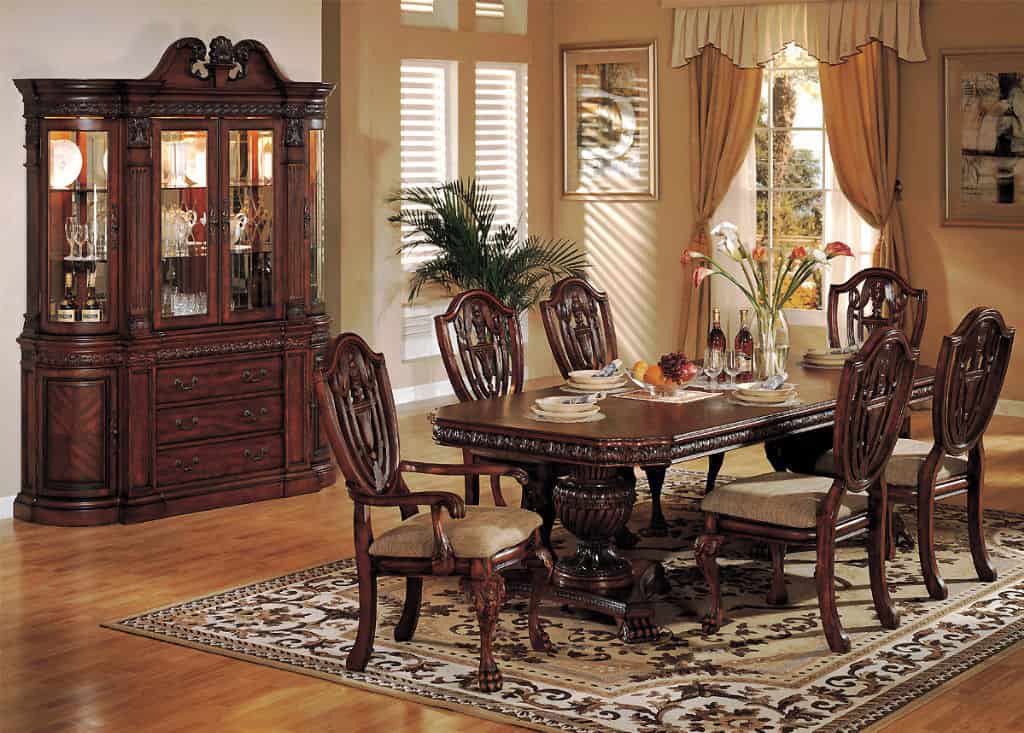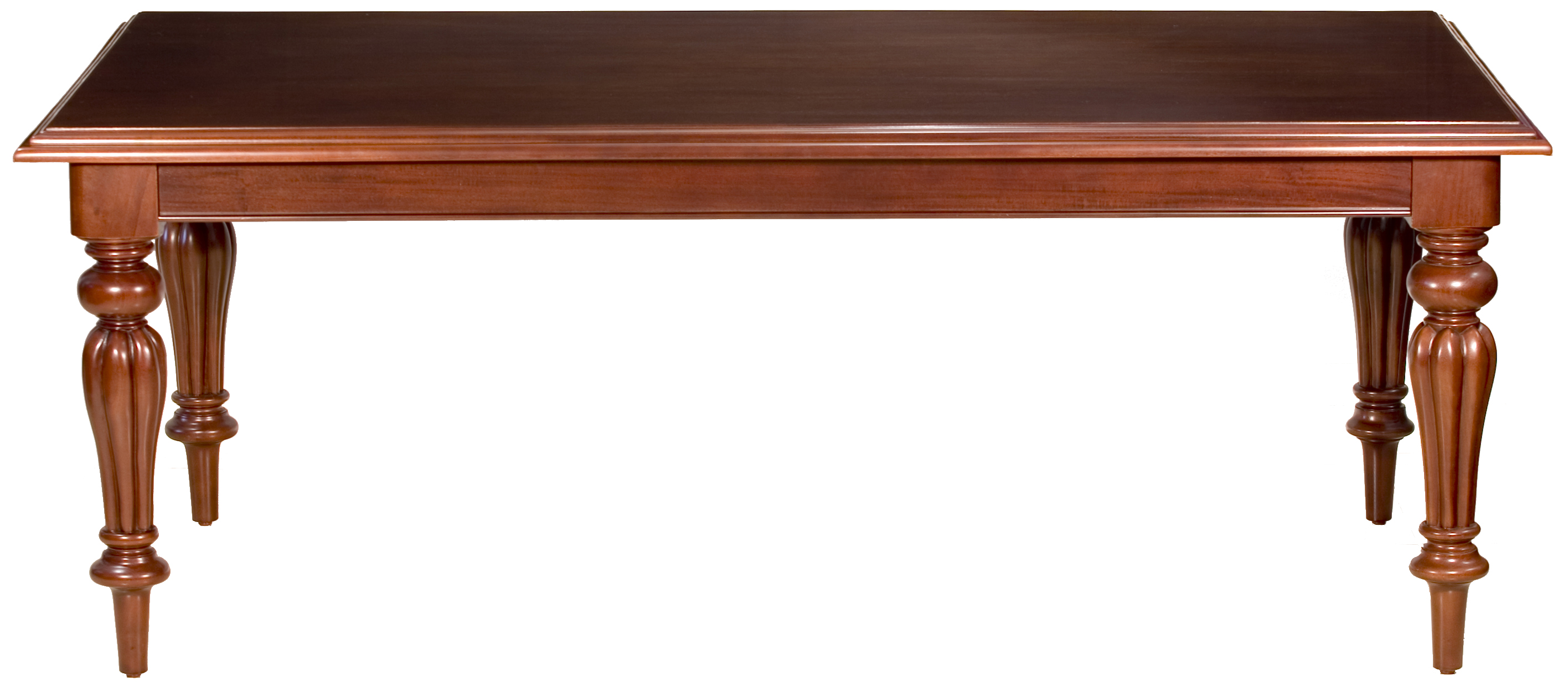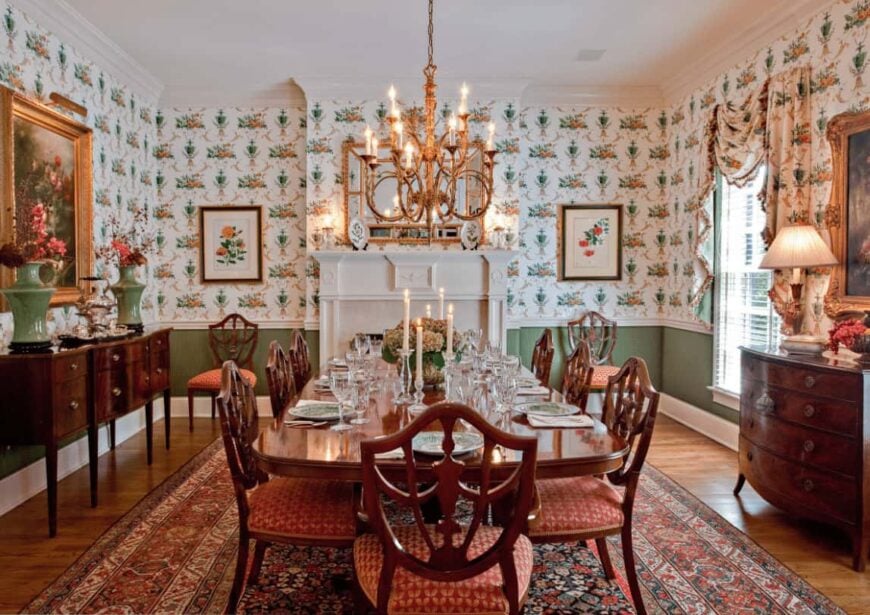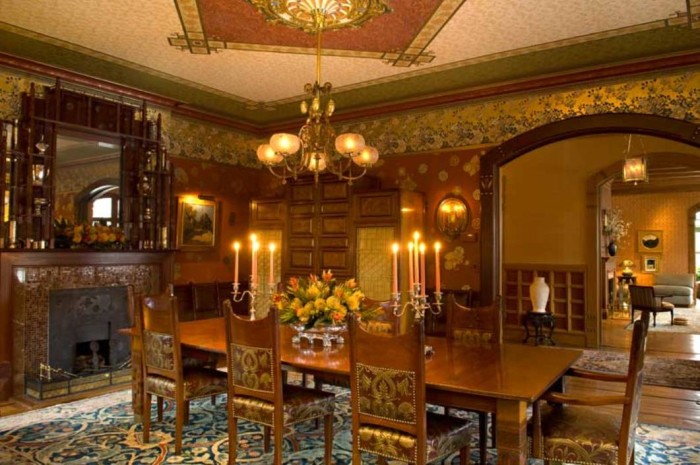The Victorian era, spanning from 1837 to 1901, was a time of opulence and grandeur in interior design. This was reflected in the design of dining rooms, which were often the most lavish and ornate spaces in a Victorian home. From elaborate furniture to intricate wallpaper, the Victorian dining room was a true display of wealth and status. The design of a Victorian era dining room was heavily influenced by the Gothic and Rococo revival styles. This meant that rooms were often dark and richly decorated, with an emphasis on intricate details and patterns. One key element of Victorian era dining room design was the use of dark, heavy furniture. Tables were often made of dark wood, such as mahogany, and were adorned with intricate carvings and details. Chairs were also typically made of wood and featured ornate designs, such as scrolling or floral motifs. To add to the grandeur of the dining room, many Victorian homes featured a large, ornate chandelier as the centerpiece. These chandeliers were often made of crystal or brass and were embellished with intricate designs.Victorian Era Dining Room Design
The furniture in a Victorian era dining room was not only functional, but also served as a way to display wealth and status. As mentioned, tables and chairs were typically made of dark wood and featured intricate designs. In addition to the dining table and chairs, Victorian dining rooms often included a sideboard or buffet. These pieces were used to display fine china and silverware, and were often ornately carved and decorated. Other common pieces of furniture in a Victorian dining room may have included a china cabinet, a tea table, or a display cabinet for showcasing collectibles or artwork.Victorian Era Dining Room Furniture
The decor of a Victorian era dining room was all about creating a sense of luxury and grandeur. This was achieved through the use of rich colors, patterns, and textures. Wallpaper was a popular choice for Victorian dining rooms, with many homeowners opting for bold, floral patterns or intricate damask designs. These wallpapers were often paired with elaborate plasterwork on the ceiling and walls, adding to the overall opulence of the space. In addition to wallpaper, other decorative elements may have included ornate draperies, Persian rugs, and decorative objects such as vases, figurines, or candelabras.Victorian Era Dining Room Decor
The dining table was the focal point of a Victorian dining room, and was often a large, rectangular piece made of dark wood. One popular style of table during this time was the "extension" table, which could be expanded by adding leaves to accommodate more guests. This was important in a time when hosting elaborate dinner parties and entertaining guests was a common occurrence. Tables were often adorned with decorative elements such as carved legs, intricate inlay, or brass accents.Victorian Era Dining Room Table
In a Victorian dining room, chairs were not just for sitting, they were pieces of art. Chairs were typically made of wood and were intricately carved and decorated. One popular style of chair during this time was the balloon-back chair, which featured a curved backrest and often had a plush, upholstered seat. Another common style was the ladder-back chair, which had a simple, vertical design on the back. Chairs were often upholstered in luxurious fabrics such as velvet or silk, adding to the overall sense of opulence in the dining room.Victorian Era Dining Room Chairs
No Victorian dining room was complete without a grand chandelier hanging above the table. These chandeliers were often the most ornate and eye-catching feature in the room. The most popular style of chandelier during the Victorian era was the crystal chandelier, which featured intricate crystal or glass prisms that reflected the light and added a touch of glamour to the space. Chandeliers were often embellished with brass or gold accents and were available in a variety of sizes and designs to fit any dining room space.Victorian Era Dining Room Chandelier
As mentioned, wallpaper was a key element in Victorian era dining room decor. It was used to add color, pattern, and texture to the walls and often featured bold, elaborate designs. Some common patterns included floral motifs, damask designs, or intricate paisley patterns. The colors used were often rich and deep, such as burgundy, dark green, or navy blue. Wallpaper was not just limited to the walls, it was also used on the ceiling and in some cases, even on the furniture.Victorian Era Dining Room Wallpaper
The color palette of a Victorian era dining room was all about creating a sense of luxury and richness. Deep, dark colors were often used on the walls, such as burgundy, dark green, or navy blue. These colors were complemented by rich, warm tones in the furniture, such as mahogany or cherry wood. Gold and brass accents were also commonly used to add a touch of glamour to the space. The combination of these colors created a sense of warmth and elegance in the dining room, making it the perfect setting for hosting elaborate dinner parties and entertaining guests.Victorian Era Dining Room Colors
The Victorian era was all about excess and opulence, and this was reflected in the style of dining rooms during this time. Rooms were often dark, richly decorated, and filled with ornate furniture and decor. The Gothic and Rococo revival styles heavily influenced the design of Victorian dining rooms, with an emphasis on intricate details, patterns, and textures. Despite the heavy and sometimes overwhelming style, Victorian dining rooms were also designed to be functional and comfortable for hosting guests and enjoying meals with family and friends.Victorian Era Dining Room Style
If you are looking to create a Victorian era dining room in your own home, there are many sources of inspiration to draw from. Look to historical homes and museums for ideas on furniture, decor, and color schemes. You can also find inspiration in popular Victorian literature and artwork, which often depicted lavish dining rooms and dinner parties. Websites and magazines dedicated to Victorian interior design can also provide valuable inspiration and ideas. Remember, the key to creating a truly authentic Victorian era dining room is to focus on rich, dark colors, intricate patterns, and ornate details. With the right elements, you can bring the opulence and grandeur of the Victorian era into your own home. Victorian Era Dining Room Inspiration
The Victorian Era Dining Room: A Reflection of Elegance and Grandeur
 The Victorian era, spanning from 1837 to 1901, was a time of opulence and extravagance in interior design. The dining room, in particular, was seen as a status symbol for the upper class and was often the most lavishly decorated room in the house. It was a place for elaborate dinner parties and formal gatherings, where the hosts could display their wealth and social standing. Let's take a closer look at the features and elements that made the Victorian era dining room a reflection of elegance and grandeur.
The Victorian era, spanning from 1837 to 1901, was a time of opulence and extravagance in interior design. The dining room, in particular, was seen as a status symbol for the upper class and was often the most lavishly decorated room in the house. It was a place for elaborate dinner parties and formal gatherings, where the hosts could display their wealth and social standing. Let's take a closer look at the features and elements that made the Victorian era dining room a reflection of elegance and grandeur.
Rich and Ornate Furniture
 Victorian
furniture was known for its intricate designs and ornate details. The dining table was the centerpiece of the room and was often made of dark, polished wood with elaborate carvings and inlays. It was typically surrounded by matching chairs, also adorned with decorative details. The sideboard, used for displaying fine china and serving dishes, was another essential piece of furniture in the Victorian dining room.
Victorian
furniture was known for its intricate designs and ornate details. The dining table was the centerpiece of the room and was often made of dark, polished wood with elaborate carvings and inlays. It was typically surrounded by matching chairs, also adorned with decorative details. The sideboard, used for displaying fine china and serving dishes, was another essential piece of furniture in the Victorian dining room.
Luxurious Fabrics and Textiles
 In keeping with the opulence of the era,
luxurious
fabrics and textiles were used to adorn the dining room. Heavy, richly patterned drapes hung from the windows, while tablecloths and napkins were made of expensive materials such as silk and damask. The chairs were often upholstered in velvet or satin, adding to the overall luxurious feel of the room.
In keeping with the opulence of the era,
luxurious
fabrics and textiles were used to adorn the dining room. Heavy, richly patterned drapes hung from the windows, while tablecloths and napkins were made of expensive materials such as silk and damask. The chairs were often upholstered in velvet or satin, adding to the overall luxurious feel of the room.
Elaborate Decorations and Accessories
 Victorian dining rooms were not complete without
elaborate
decorations and accessories. Chandeliers, made of crystal or brass, hung from the ceilings, casting a warm glow over the room. Ornate candelabras and candlesticks were also popular, adding to the ambiance of the room. The walls were adorned with paintings, mirrors, and tapestries, while decorative objects such as vases, figurines, and clocks were displayed on shelves and mantels.
Victorian dining rooms were not complete without
elaborate
decorations and accessories. Chandeliers, made of crystal or brass, hung from the ceilings, casting a warm glow over the room. Ornate candelabras and candlesticks were also popular, adding to the ambiance of the room. The walls were adorned with paintings, mirrors, and tapestries, while decorative objects such as vases, figurines, and clocks were displayed on shelves and mantels.
Formal Table Settings
 Formal dining was a significant part of Victorian culture, and as such,
formal
table settings were a must. Fine china, crystal glasses, and silverware were used for every meal, and multiple courses were served on
elaborately
decorated plates. The dining table was often set with multiple layers of tablecloths, placemats, and doilies, adding to the overall grandeur of the dining experience.
In conclusion, the Victorian era dining room was a true reflection of elegance and grandeur. From the rich and ornate furniture to the
luxurious
fabrics and textiles, every element was carefully chosen to showcase the wealth and status of the homeowners. Even today, the Victorian dining room remains a symbol of sophistication and extravagance, making it a popular choice for those looking to add a touch of old-world charm to their homes.
Formal dining was a significant part of Victorian culture, and as such,
formal
table settings were a must. Fine china, crystal glasses, and silverware were used for every meal, and multiple courses were served on
elaborately
decorated plates. The dining table was often set with multiple layers of tablecloths, placemats, and doilies, adding to the overall grandeur of the dining experience.
In conclusion, the Victorian era dining room was a true reflection of elegance and grandeur. From the rich and ornate furniture to the
luxurious
fabrics and textiles, every element was carefully chosen to showcase the wealth and status of the homeowners. Even today, the Victorian dining room remains a symbol of sophistication and extravagance, making it a popular choice for those looking to add a touch of old-world charm to their homes.
















































/Chandelier_0635-0b1c24a8045f4a2cbdf083d80ef0f658.jpg)



















